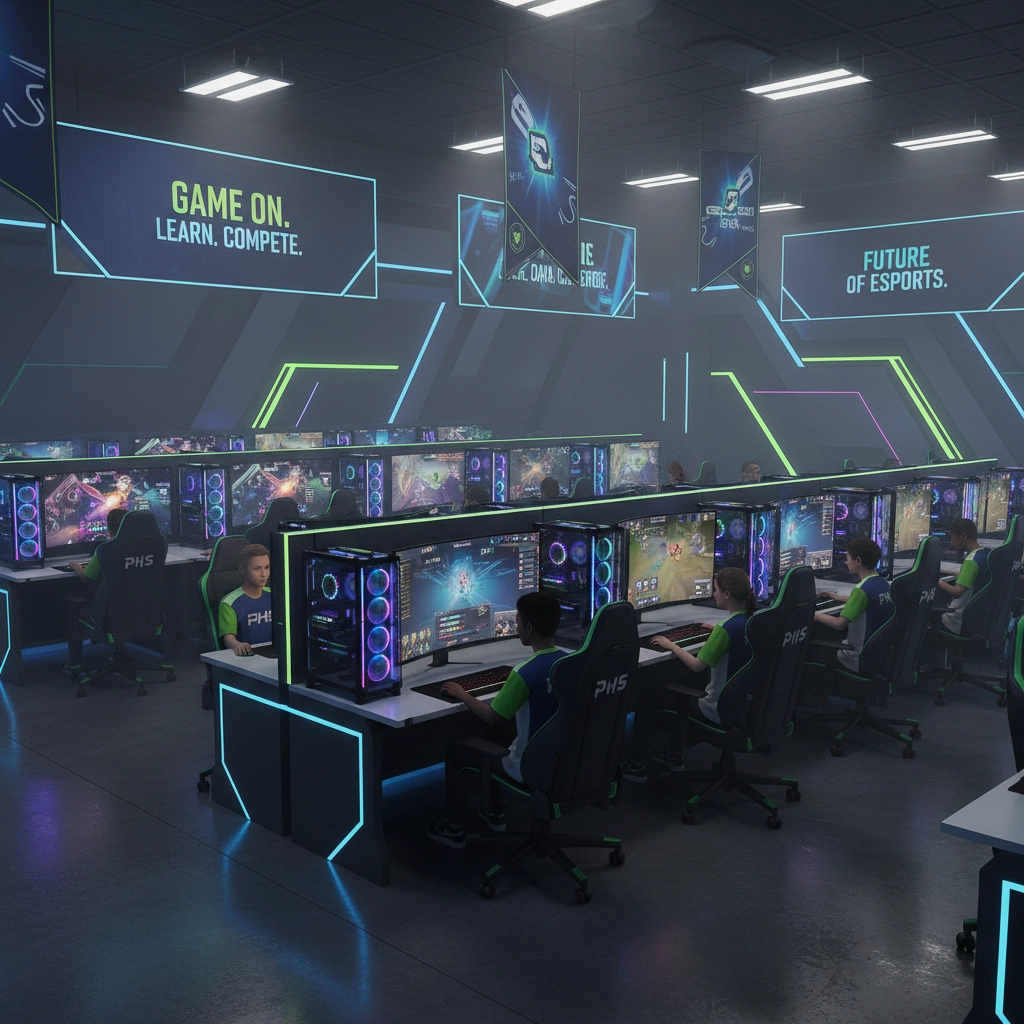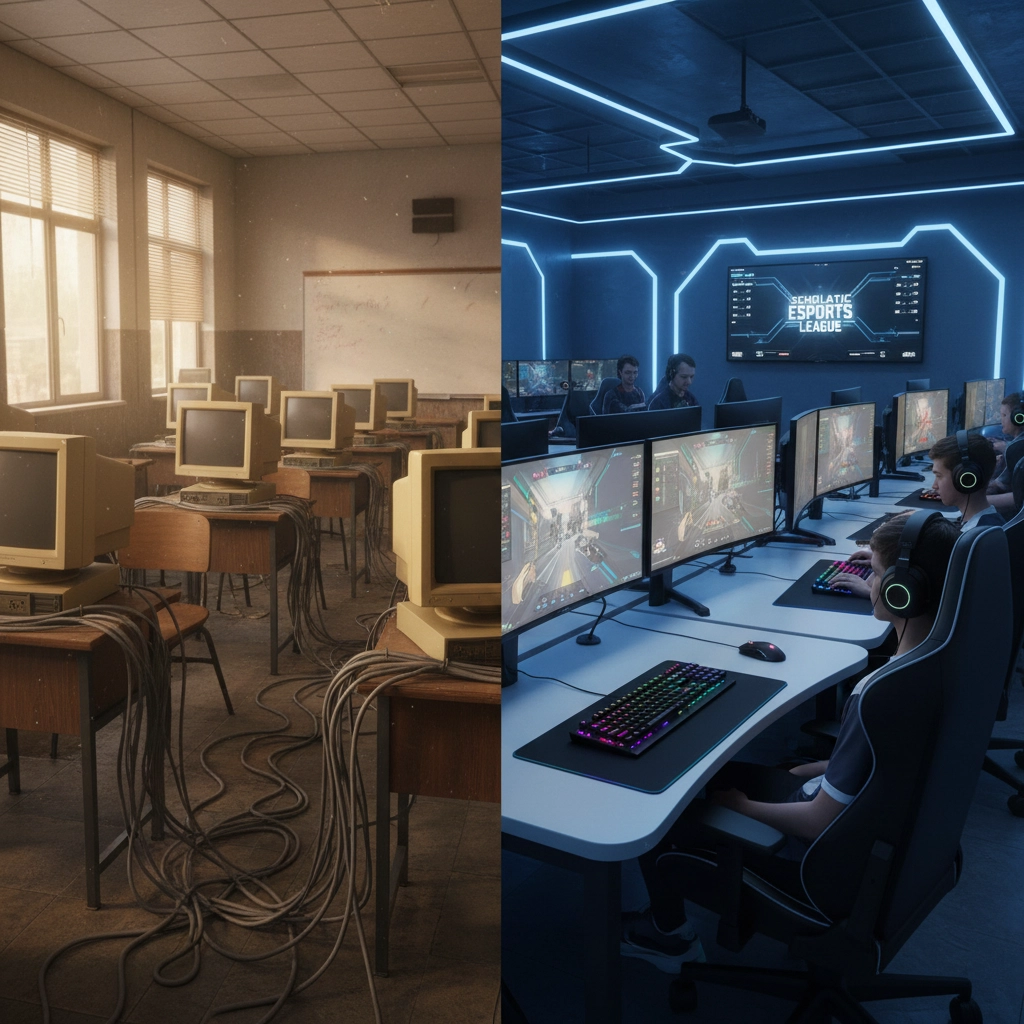The integration of esports programs in high school educational systems represents a measurable shift in secondary education approaches. Current data indicates that esports participation in educational institutions has increased substantially, with organized leagues now operating across multiple states. Educational administrators have documented specific outcomes related to student engagement metrics and skill development assessments.
The esports industry generates approximately 5 billion dollars in annual revenue. Educational institutions have begun implementing structured esports programs as both extracurricular activities and formal curriculum components. These programs operate under established guidelines and measurement frameworks.
Current Implementation Status
High school esports programs currently function through several organizational structures. PlayVS, NASEF (North America Scholastic Esports Federation), and HSEL (High School Esports League) provide standardized competition frameworks for participating institutions. These organizations maintain official league standings, tournament schedules, and scholarship distribution systems.

Student participation data shows consistent enrollment increases across participating schools. Programs typically include team-based competitions in titles such as League of Legends, Overwatch, and Rocket League. Schools document student participation rates, academic performance correlations, and post-graduation pathway tracking.
The implementation process requires specific technological infrastructure. Schools must maintain gaming-capable computers, high-speed internet connections, and dedicated practice spaces. Budget allocations for esports programs vary between institutions, with documented spending ranges from basic equipment setups to comprehensive facility installations.
Educational Outcomes Documentation
Esports programs produce measurable educational benefits across multiple assessment categories. STEM skill development occurs through direct exposure to game mechanics, strategic analysis, and technical troubleshooting requirements. Students demonstrate improved problem-solving capabilities through documented performance assessments.
Critical thinking development manifests through strategic gameplay requirements. Team-based esports titles require rapid decision-making, resource allocation planning, and adaptive strategy implementation. Educational assessment tools measure these cognitive developments through standardized testing protocols.

Communication skill improvements occur through team coordination requirements. Esports competitions necessitate clear verbal communication, leadership delegation, and collaborative problem-solving. Schools document these improvements through behavioral assessment rubrics and peer evaluation systems.
Social-emotional learning outcomes include improved self-regulation, stress management, and collaborative interaction capabilities. Students participating in structured esports programs demonstrate measurable improvements in these assessment areas compared to control groups.
Infrastructure and Implementation Challenges
Technical infrastructure requirements present significant implementation barriers for educational institutions. Schools must maintain current hardware specifications, reliable network connectivity, and appropriate software licensing agreements. These requirements generate ongoing operational costs that institutions must incorporate into budget planning cycles.
Qualified coaching personnel remain limited across educational markets. Esports coaching requires understanding of competitive gaming strategies, educational pedagogy, and student development principles. Professional development programs for educators in esports coaching show limited availability across geographic regions.

Safety protocol implementation requires comprehensive policy development. Schools must establish guidelines for online interaction monitoring, competitive gaming time limitations, and student wellness assessment procedures. Background verification processes for coaching staff follow established educational employment standards.
Equipment maintenance and replacement cycles generate ongoing financial obligations. Gaming hardware requires regular updates to maintain competitive functionality. Schools must plan for depreciation schedules and technology refresh requirements within existing budget constraints.
Growth and Development Opportunities
Curriculum integration opportunities extend beyond competitive gaming activities. Schools develop courses in game design principles, esports management, content creation, and performance analysis. These curriculum additions align with established educational standards and assessment frameworks.
Scholarship opportunities through collegiate esports programs provide documented pathways for student advancement. Universities maintain esports programs with scholarship distributions comparable to traditional athletic programs. High school programs serve as feeder systems for these collegiate opportunities.

Career pathway development includes roles in game development, event management, broadcasting, marketing, and technical support. Industry partnership agreements between schools and esports organizations create internship opportunities and professional development programs for participating students.
Technology integration advances include artificial intelligence coaching tools, virtual reality training systems, and cloud-based competition platforms. These technological developments expand program capabilities while reducing local infrastructure requirements for participating institutions.
League Structure and Competition Frameworks
Organized competition structures provide standardized frameworks for inter-school competition. State-level championships, regional tournaments, and national championship events create progression pathways similar to traditional athletic programs. These competitions maintain official records, statistical tracking, and performance documentation systems.
Broadcasting and media production components of esports programs develop student technical skills in video production, live streaming, and content creation. Students operate camera equipment, manage audio systems, and produce live competition broadcasts through established media production protocols.

Sponsorship and funding models for high school esports programs include corporate partnerships, community support initiatives, and educational foundation grants. These funding mechanisms provide sustainable financial support for program operations and equipment maintenance requirements.
Tournament scheduling aligns with academic calendar requirements and maintains student academic performance standards. Competition seasons operate within established timeframes that accommodate educational priorities and assessment schedules.
Future Development Projections
Market analysis indicates continued expansion of high school esports program implementation. Educational technology companies develop specialized solutions for scholastic esports management, including performance tracking systems, academic integration tools, and competition management platforms.
Professional pathway development continues expansion through industry partnerships and career preparation programs. Students demonstrate measurable preparation for esports industry employment through documented skill assessments and professional certification achievements.
Research initiatives examine long-term educational outcomes of esports program participation. Universities conduct longitudinal studies tracking academic performance, career pathway selection, and professional development outcomes for program participants.
Technology advancement integration includes emerging platforms, improved accessibility features, and enhanced educational measurement tools. These developments expand program accessibility while maintaining educational outcome measurement capabilities.
The implementation of standardized assessment metrics across participating institutions enables data-driven program improvement strategies. Schools utilize performance data to optimize program structures, resource allocation, and student development outcomes through evidence-based decision-making processes.
